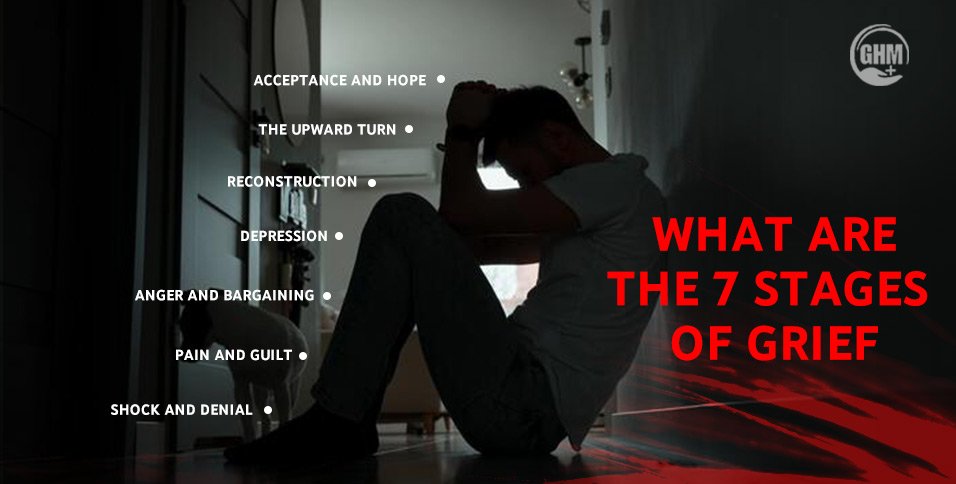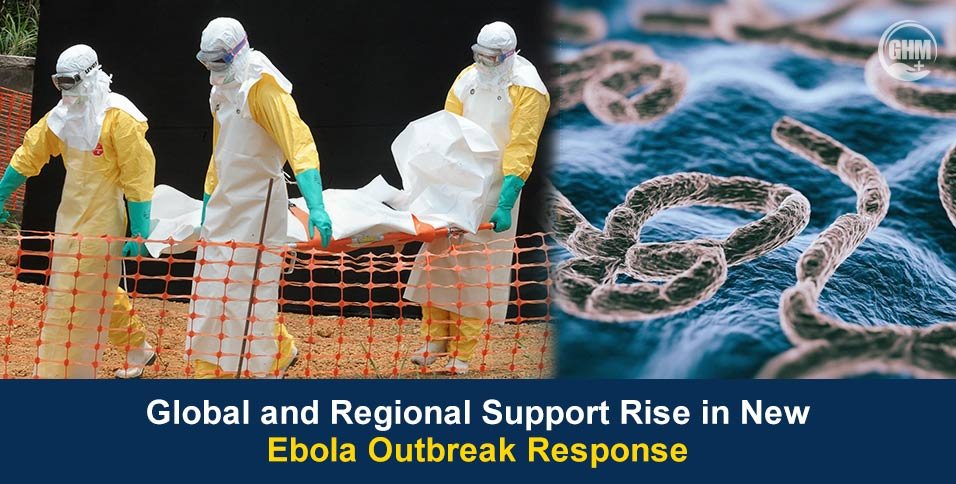“Grief is not a disorder, a disease, or a sign of weakness. It is an emotional, physical, and spiritual necessity.”
Grief is deeply personal. And yet, nearly everyone asks the same question: What are the 7 stages of grief, and how do I get through them? That question doesn’t have one fixed answer. The stages of grief aren’t a checklist or a timeline. They’re more like emotional stopovers you may or may not pass through after a loss. While some people go through shock and anger, others may skip straight to sadness or acceptance.
Sometimes, two stages show up at once. Sometimes, one stays for months. This is why understanding these stages matters. It doesn’t solve grief, but it makes the weight easier to carry. In this blog, you’ll learn what the stages of grief really mean, how your body responds to loss, when to ask for help, and how to take care of yourself during the process. Even though grief looks different for everyone, no one has to navigate it alone.
The Evolution of Grief Understanding: From 5 to 7 Stages
The Kübler-Ross model introduced in 1969 explained grief in five stages—Denial, Anger, Bargaining, Depression, and Acceptance. Psychiatrist Elisabeth Kübler-Ross first described this in her book On Death and Dying. These stages helped people understand grief in a structured way.
But grief isn’t always that simple. Over time, people began asking: What are the stages of grief? Experts noticed that many people go through emotions not covered in the original model. So, the model expanded.
Now, many therapists recognize seven stages:
- Shock and Denial
- Pain and Guilt
- Anger and Bargaining
- Depression
- The Upward Turn
- Reconstruction
- Acceptance and Hope
These extra stages show how grief can feel at different times. Someone may feel pain one day and slight hope the next. That’s completely normal.
According to a 2021 report by Sawyer et al., 68% of the general public and 44% of mental health professionals endorsed the stages.
So, when we ask what the 7 stages of grief are, we’re looking at a more complete picture. This version fits real life better. It reflects how people grieve not only after a death but also after breakups, job loss, or major life changes.
Using this model helps people feel seen. It reminds us that healing doesn’t follow rules. It follows real emotions—and that’s okay.
The 7 Stages of Grief Explained: A Journey Through Loss
1. Shock and Disbelief
Many people ask, what is the first stage of grief, especially when dealing with sudden loss. The first stage is shock and disbelief. It feels like time stops. You may think, “This can’t be real,” or feel nothing at all. That’s okay. Shock works like a safety net for the brain. It slows things down so your mind can begin to process what happened.
This stage often comes with numbness, confusion, and even physical stillness. According to a 2019 survey in the USA, over 75% of grieving individuals report this as their first emotional response. That tells us this reaction is not only common but also natural.
You might feel like you’re watching life from far away. Even simple things like eating or talking can feel too hard. But remember, there’s no “right way” to grieve. For now, allow yourself to pause. Take deep breaths. Drink water. If your emotions feel missing, that’s also part of it.
So when people ask about stages of grief, it helps to start with this one truth: grief begins in silence. And sometimes, silence needs space. Let yourself stay there for a moment, without pressure, without judgment.
2. Denial
One of the most recognized stages of grief is denial. It usually follows shock and helps slow down the emotional impact. The mind tries to protect you by pretending the loss didn’t happen. You might think, “This can’t be true” or focus on small, irrelevant tasks just to avoid facing the truth. That’s not wrong. It’s how your brain buys time to adjust.
According to the 2019 Journal of Death and Dying, almost 72% of people experiencing fresh loss enter a short-term denial phase within the first two days. This confirms how natural this phase really is.
In day-to-day life, this may look like laughing at old photos as if nothing changed. Or you may keep someone’s room just the way it was. These aren’t acts of ignorance—they’re acts of preservation. They help you survive the early chaos of grief.
If you’re here, gently remind yourself: denial is not weakness. It’s a pause, not an end. While you’re in this space, lean on someone you trust. Let them be your anchor when your mind is drifting. Even short conversations can help you slowly face the truth. Each time you open up—even a little—you move forward in the stages of grief.
3. Anger
In the stages of grief, anger often appears when the truth begins to sink in. It can feel explosive or quietly bitter. You might find yourself shouting, crying, or blaming people—even the one who passed away. These feelings aren’t bad. They’re a signal that your heart is trying to make sense of something painful.
Many people ask, “Why me?” or “Why now?” These questions carry frustration and sadness. According to the Grief Recovery Institute, nearly 63% of people in grief reported anger as one of their strongest early reactions. That shows just how common and real this stage is.
You might snap at loved ones or feel rage over small things. But underneath that, there’s usually pain. Anger is how your body tries to take control when everything feels out of control.
Don’t push that anger down. Instead, find safe ways to let it out. Talk to someone who understands. Write your feelings down. Take a walk or go for a run. Even crying helps. What matters is allowing yourself to feel, without guilt.
So if you’re feeling angry, know that you’re not alone. You’re still moving through the stages of grief, one breath at a time.
4. Bargaining
Among the 7 stages of grief, bargaining is often the quietest yet mentally exhausting. It shows up as mental negotiations—“If only I had done this,” or “What if I had just said that?” You might try to undo the loss in your mind or imagine deals with fate to lessen the pain. This is your mind searching for control in a moment that feels completely out of your hands.
This stage is usually filled with guilt. People often replay moments over and over. According to the 2020 Journal of Counseling Psychology, around 57% of grieving individuals reported persistent thoughts of bargaining within the first month of their loss. It shows how universal and silent this phase is..
You may feel stuck in the past. You might dwell on tiny actions and wonder if they changed the outcome. But remember, grief clouds logic. These thoughts are natural, but not facts.
What helps here is self-kindness. Try saying to yourself, “I did the best I could at the time.” Speak it out loud if needed. Slowly, let go of the pressure to be perfect. Healing begins when we stop blaming ourselves during the stages of grief and start holding space for our humanity.
5. Guilt
Guilt doesn’t always announce itself loudly, but it often lingers quietly in the background of the stages of grief. It shows up as second-guessing, self-blame, or the constant thought, “I should have done more.” These feelings feel heavy because your heart is trying to rewrite the past.
In fact, Los Angeles Outpatient Center revealed that over 88% of people grieving report emotional symptoms, with sadness (76%) and depression (43%) among the most frequent. 68% report intense anxiety or panic attacks during bereavement.
You might feel responsible for things that were never in your control. For example, people often feel survivor’s guilt—wondering why they’re still here while someone else isn’t. This emotion doesn’t need logic; it just needs space.
However, you can gently challenge guilt by reminding yourself: you acted with the knowledge and strength you had at the time. Try writing down your thoughts, and then ask, “Would I blame someone else for this?” If not, don’t blame yourself either.
During the stages of grief, guilt can slow healing. But self-compassion helps you move forward with truth, not blame.
6. Depression
Among the stages of grief, depression often arrives when the full weight of loss settles in. It’s not just feeling sad—it’s feeling empty. You may lose interest in things you once loved. Getting out of bed can feel like a task. Many people isolate themselves without even realizing it.
This stage brings deep sadness, tiredness, and a sense of hopelessness. Crying becomes common, and even small tasks may feel too hard. According to the report, depression prevalence in the first month after spousal loss ranged widely from approximately 14.6% to 58.3% across different samples.
You might feel numb or disconnected from the world. Even talking can feel exhausting. But here’s the truth—this stage isn’t a failure. It’s a sign that you are processing something deeply human.
Still, try not to isolate completely. Talk to someone, even for a few minutes. Sit with a loved one, even in silence. Let them simply be there. If needed, reach out to a counselor. Professional help can create space for healing.
As you go through the stages of grief, remember—depression isn’t permanent. With time, support, and self-care, light slowly returns. Even if it’s just one small moment at a time.
7. Acceptance and Hope
In the final part of the stages of grief, we arrive at Acceptance and Hope. This stage doesn’t mean the pain disappears. It simply means you’ve stopped fighting the reality of the loss. You begin to accept that life has changed. This is when the heart starts making peace with what happened, even if it still hurts sometimes.
Many people feel a sense of calm here. You may notice a quiet strength growing inside you. There’s renewed energy. You might begin creating new routines or setting small goals again. You look ahead—not with full confidence yet—but with gentle hope.
Acceptance stages in hospice and palliative care contexts show that many patients and their relatives become nearly or fully accepting of the reality of loss by eight to twelve weeks, with around 51% of patients and 69% of relatives achieving this state of acceptance in one study.
It’s okay to laugh again. It’s okay to make plans. The memories will stay with you, but they won’t hurt the same way. You can honor what was lost while building a new normal.
To cope better, try writing a letter to the one you lost. Or plant something in their memory. These small actions help anchor this stage emotionally.
Important Considerations for the Grieving Process
Why do some people bounce back quickly after a loss while others take longer? Because grief is deeply personal. There’s no one-size-fits-all approach, and the stages of grief don’t follow a fixed order. Some people may skip a stage entirely, while others may revisit one several times. It’s not linear—it’s layered.
You might feel fine one day and completely overwhelmed the next. That’s normal. And it’s not just emotional. Many people also face physical symptoms like fatigue, poor sleep, appetite changes, and unexplained body aches.
To manage this, simple self-care matters. Let yourself feel every emotion—don’t rush healing. Stick to regular meals and sleep. Light exercise or hobbies like painting, walking, or journaling can help ease the burden. Also, keep talking—stay close to those who make you feel heard.
But how do you know when it’s time to seek help?
If sadness won’t lift, or you feel numb for weeks, reach out. Warning signs include being unable to function daily, persistent hopelessness, isolation, or self-harming thoughts. Therapists, grief counselors, or local support groups can make a big difference. Studies indicate that by 10 to 12 weeks post-loss, around 40–45% of people begin to experience moments of acceptance, purpose, and emotional balance returning, reflecting initial healing phases.
Ultimately, being kind to yourself is not a luxury—it’s part of healing through the stages of grief.
Key Takeaways
Grief doesn’t move in straight lines. The stages of grief may come out of order, loop back, or skip altogether. And that’s okay. You don’t have to “finish” grief. You just have to walk through it in your own way.
One thing I’ve noticed over time—whether from personal experience, patient stories, or case research—is that most people think they’re “doing grief wrong” when it feels chaotic. But grief is chaos. It’s your mind and body adjusting to something that feels impossible. That’s not failure; it’s humanity.
Every stage has a purpose. Shock protects you. Anger gives you fire. Depression lets you rest. And hope, even if faint, reminds you there’s more to come. You’re not weak for needing time. You’re not broken for asking for help.
If you’re grieving, here’s my honest guidance: keep eating, keep sleeping, and talk to someone—anyone you trust. Let grief take its shape. Don’t rush it into yours.
Over time, the edges soften. And even though the loss stays, life begins again—quietly, unexpectedly, and sometimes beautifully.
Grief changes you, yes. But sometimes, it also reveals the version of you that’s more real than ever before.
That’s not the end. That’s the becoming.



















